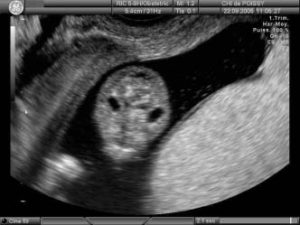What are Neck Ultrasounds?
An ultrasound of the neck uses high frequency sound waves to create a live image from inside of a patient’s body. It is a painless test that is used in the medical field today. An ultrasound is also sometimes referred to as a sonogram, diagnostic sonography, or ultrasonography. The medical professional that performs an ultrasound is called a sonographer.
As an ultrasound uses sound waves rather than radiation, it is regarded as being a safe scan. Because of this, it is the preferred method to use during pregnancy.
An ultrasound diagnoses problems with internal organs, blood vessels, and soft tissue structures within the body. Although generally associated with being used during pregnancy, an ultrasound is used to examine many other parts of the body including the gallbladder, liver, kidneys, pancreas, bladder, and many other internal structures.
A carotid ultrasound uses sound waves to examine the structure and function of the carotid arteries in a patient’s neck.
Reasons for a Neck Ultrasound: 
Ultrasounds are used for a multitude of reasons. A physician may order an ultrasound if a patient is experiencing any pain, swelling, or other abnormalities that require an internal view of the organs.
A neck ultrasound can be used to guide doctors or surgeons during a procedure, such as a biopsy. They are important in planning for certain types of therapy and surgery, as well as in the aftermath to determine whether the patient’s body is responding to treatment.
Ultrasounds can be used to detect cysts, obstructions, and infections in the body. They can also measure blood flow in the arteries to detect blockages.
An ultrasound may be used to check for certain cancers in various different ways including to detect abnormal tumors, growths or lumps.
A Neck Ultrasound may help diagnose (find):
A neck ultrasound can be used to observe the thyroid gland to look for nodules, growths, or tumors.
An ultrasound of the neck is used to examine the carotid arteries located on each side of a patient’s neck. The arteries deliver blood from your heart to your brain.
A neck ultrasound can be used to test for blocked or narrowed carotid arteries, which can indicate an increased risk of stroke.
An ultrasound of the neck and the carotid arteries can help a physician determine what kind of treatment is needed to lower risk of stroke.
 Vikas Diagnostics Best Diagnostics Lab In Kanpur
Vikas Diagnostics Best Diagnostics Lab In Kanpur

